Top 10 Most Important Vikings In History
The Vikings left an undeniable mark on the world during the Viking Age, a period which lasted from 793 to 1066 AD and was characterized by these Norsemen who sailed the high seas in their longships to explore, raid, colonize, conquer and trade. Let's open the history books and see which Vikings are the most iconic and important in human history.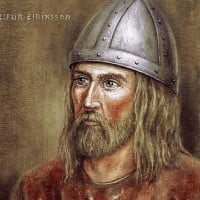 Leif Erikson or Leif Ericson was a Norse explorer from Iceland. He was the first known European to have set foot on continental North America, before Christopher Columbus.
Leif Erikson or Leif Ericson was a Norse explorer from Iceland. He was the first known European to have set foot on continental North America, before Christopher Columbus. Leif Erikson was the son of Erik the Red and a Norse explorer from Iceland. What makes him an important figure among his Viking peers is that he is believed to have been the first European to have set foot on continental North America, approximately half a millennium before Christopher Columbus.
Leif Erikson was such an important person in the discovery of North America. He deserves first in my opinion
He even has his own day dedicated to him, Leif Erikson Day.
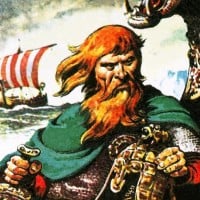
I hear the history of Vikings is very intriguing. There were wars, heroes, chiefs. They have a long history that are known but some that are mysteries. I would like to learn more about them. The only two Vikings I've heard of in this list were Erik the Red and Leif Erikson.
Erik Thorvaldsson better known as Erik the Red was a Norwegian Viking and son of Thorvald Asvaldsson and Åsvald Åsvaldson. Erik the Red is a figure who embodies the bloodthirsty reputation of the Vikings, and for good reason as he was banished from Iceland for murdering several men. His nickname "the Red" was likely earned because of the color of his hair. What he is most famous for however is being the first to successfully establish a settlement in Greenland.
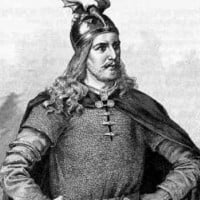
Ragnar Lodbrok (or Lothbrok) was a legendary Viking known from Old Norse poetry of the Viking Age, Icelandic sagas, and near-contemporary chronicles. Ragnar lived in the 9th century and is famous for raiding the British Isles as well as Paris. Many historians are unsure if he truly existed or if the stories in the sagas are a mix of different people, but there is evidence that he existed. He is said to have died by being thrown in a pit of snakes after his capture by King Aella of Northumbria during a raid in England.
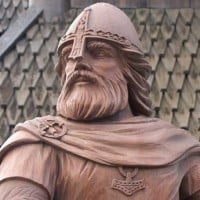
Ivar the Boneless was one of the sons of Ragnar Lodbrok and a Viking leader who invaded England. He was one of the leaders of the Great Heathen Army which invaded England in 865 AD. The origin of his nickname "Boneless" isn't certain. According to the Tale of Ragnar Lodbrok, Ivar's bonelessness was the result of a curse. Another theory is that he was actually known as "the Hated" and that his nickname in Latin wasn't translated well.
I feel like he had a bigger impact than the others on this list, given that he led the Great Heathen Army and all.
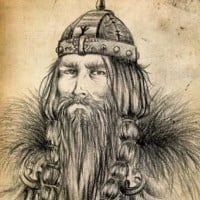
His name lives on through technology.
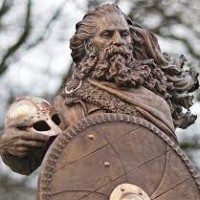
Harald Fairhair (or Harald I) is considered the first King of Norway. According to traditions current in Norway and Iceland in the twelfth and thirteenth centuries, he reigned from c. 872 to 930.
Bjorn Ironside was a Norse Viking chief and King of Sweden and said to be the son of Ragnar Lodbrok. He led an expedition and raided areas around the Mediterranean Sea. After raiding down the Iberian coast and fighting their way through Gibraltar, they pillaged the south of France where the fleet stayed over winter, before landing in Italy where they captured the city of Pisa.
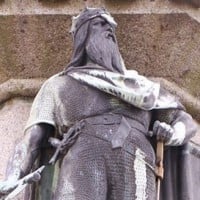
Rollo of Normandy was a Viking who became the first ruler of Normandy, a region in northern France. Early in the 10th century, Rollo's Danish army attacked France, and he established himself in an area along the Seine River. Charles III the Simple of France held off his siege of Paris, defeated him near Chartres, and negotiated the treaty of Saint-Clair-sur-Epte, giving him the part of Neustria that came to be called Normandy. In return, Rollo agreed to end his brigandage, convert to Christianity and protect the region from further Viking attacks.
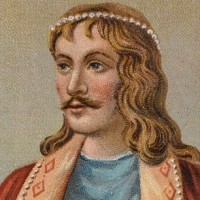
Cnut the Great was King of England, Denmark and Norway, often referred to together as the North Sea Empire during his rule.
People loved him as King, he was said to be a just ruler.
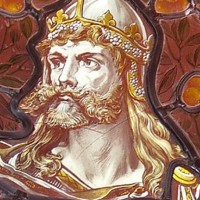
Born Harald Sigurdsson, he was King of Norway from 1046 to 1066 and was given the epithet Hardrada which roughly translated as "stern counsel" or "hard ruler". He is regarded by many as the last great Viking leader. While on his conquest of England to claim the English throne, Hardrada was killed in the Battle of Stamford Bridge.
If I remember correctly, he was killed in a battle against William the Conqueror? Correct me if I'm wrong.
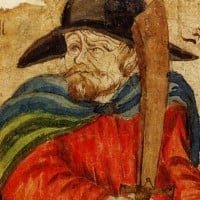
Egill Skallagrímsson was a Viking Age war poet, berserker and farmer. He is known mainly as the anti-hero of Egil's Saga. He is said to have killed for the first time at the age of 7, after being cheated by another boy in a game, Egill went home to grab an axe which he used to split the cheater's skull. He is also said to have met other famous Vikings like Eric Bloodaxe, who apparently hated him and even sent men after him.
He's a very famous poet, a teacher once mentioned him at the College I went to.
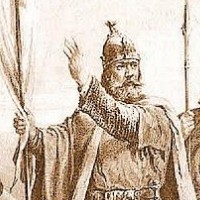
Olaf Tryggvason was King of Norway from 995 to 1000. According to Viking sagas, he is the great-grandson of Harald Fairhair, first King of Norway. Olaf is seen as an important factor in bringing Christianity in Norway.
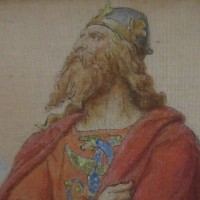
Sweyn Forkbeard (also called Sweyn I of Denmark) was king of Denmark from 986 to 1014. He was the father of King Harald II of Denmark, King Cnut the Great and Queen Estrid Svendsdatter. He seized the throne by revolting against his father Harald Bluetooth. Forkbeard also participated like many in his time in invading England.
Born Eric Haraldsson, he was a 10th-century Norwegian ruler. Historians have had a hard time reconstructing the events of Eric Bloodaxe's life. He is said to be the son of Harald Fairhair, the first King of Norway, and to have had short stints as King of Norway and twice as King of Northumbria.

Gorm the Old is known as the first recognized Danish king. Gorm is the son of Semi-Legendary King Harthacnut I and he became king after his father's death, reigning from c. 936 to his death c. 958 or a few years later. Gorm married a woman named Thyra Danebod who is given credit to building the Danevirke against the Saxons who were unfriendly in the south at the time. Gorm and Thyra had 5 children together. His title "the Old" meant that he was the head of his household
Freydis Eiríksdóttir was Erik the Red's daughter (and Leif Erikson's sister or half sister). She is considered the most famous female Viking as there are many stories written about her in the sagas. The most famous one telling the tale of how in an expedition in Vinland (the Eastern coast of North America) she fought off a group of natives by herself while pregnant.
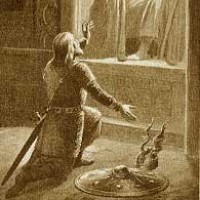
Eric the Victorious was a Swedish monarch who ruled from 970 to 995. Although there were earlier Swedish kings, he is the first Swedish king in a consecutive regnal succession, who is attested in sources independent of each other, and consequently Sweden's list of rulers usually begins with him.
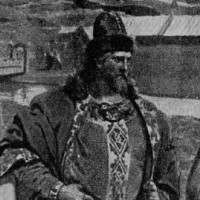
Gunnar was a 10th Century Icelandic viking chief who is famous for his physical prowess, good looks and abilities as a warrior. Unlike most vikings, he was skilled in close combat, archery and stone throwing. He was said to be capable of jumping his own body height while wearing full armour. Gunnar died after he killed two men from the same family. Rather than fleeing, he decided to stay at his home, where there was an epic battle in which he was eventually killed.
Magnus Olafsson, better known as Magnus the Good, was King of Norway from 1035 and King of Denmark from 1042, ruling over both countries until his death in 1047. He was an illegitimate son of Olaf II of Norway, and fled with his mother when his father was dethroned in 1028. He returned to Norway in 1035 and was crowned king at the age of 11. In 1042, he was also crowned king of Denmark. Magnus ruled the two countries until 1047, when he died under unclear circumstances. After his death, his kingdom was split between Harald Hardrada in Norway and Sweyn Estridsson in Denmark.
Ubba was a ninth-century Viking and one of the commanders of the Great Heathen Army that invaded Anglo-Saxon England in the 860s alongside his brothers Ivar and Halfdan.
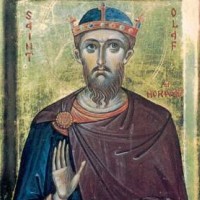
Halfdan Ragnarsson was one of the sons of Ragnar Lodbrok, a Viking leader and a commander of the Great Heathen Army which invaded the Anglo-Saxon kingdoms of England, starting in 865. He was also the first Viking King of Northumbria and a pretender to the throne of Kingdom of Dublin.
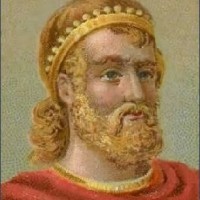
Harthacnut (also written Hardicanute) sometimes referred to as Canute III, was King of Denmark from 1035 to 1042 and King of England from 1040 to 1042. He was the son of King Cnut the Great and Emma of Normandy.
Hastein was a notable Viking chieftain of the late 9th century who made several raiding voyages. Because his name is referenced so often without any qualifiers, it is difficult to know whether it is the same person mentioned in each story. He is mentioned to have been with Bjorn Ironside on many occasions such as the expedition in the Mediterranean sea, in Francia (France) and the Great Heathen Army.
Guthrum was King of East Anglia in the late 9th century. Originally a native of what is now Denmark, he was one of the leaders of the "Great Summer Army" that arrived in Reading during April 871 to join forces with the Great Heathen Army. The combined armies were successful in conquering the kingdoms of East Anglia, Mercia, and Northumbria, and overran Alfred the Great's Wessex, but were ultimately defeated by Alfred at the Battle of Edington in 878. The Danes retreated to their stronghold, where Alfred laid siege and eventually Guthrum surrendered. Under the terms of his surrender, Guthrum was obliged to be baptised as a Christian and then leave Wessex. The subsequent Treaty of Alfred and Guthrum set out the boundaries between Alfred and Guthrum's territories, as well as agreements on peaceful trade.